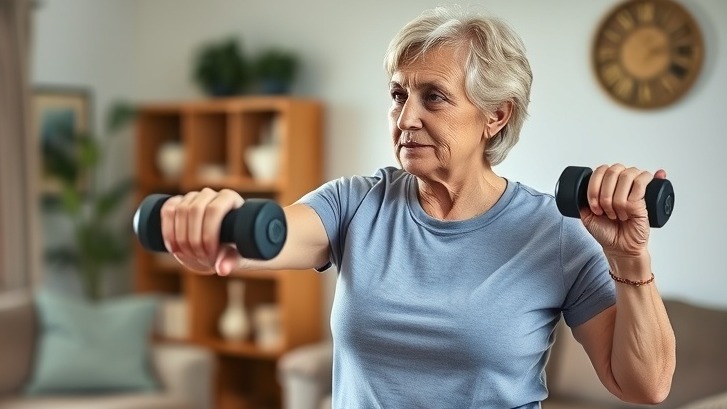
Unlocking the Benefits of Exercise for Arthritis Care
Managing arthritis can often feel like navigating a complex maze, especially for those caring for aging parents. However, integrating consistent exercise into daily routines is not just beneficial; it's transformative. While it may seem counterintuitive to suggest that physical activity could ease joint pain, it’s a scientifically-backed approach that many caregivers are embracing.
Why Exercise is Essential for Improving Quality of Life
For individuals dealing with arthritis, regular exercise offers a plethora of benefits. Firstly, it can significantly reduce joint pain and stiffness, often providing relief that medication alone cannot achieve. Engaging in movement lubricates the joints, enhancing one’s overall range of motion. Building strength through targeted exercises offers joint support, crucial for those experiencing deterioration due to arthritis. Additionally, managing weight through exercise is vital, as it alleviates pressure on weight-bearing joints, such as the knees and hips.
A Positive Spin: Mood and Mental Health Benefits
Exercise isn’t just about physical well-being; it lends itself to emotional health as well. The release of endorphins during physical activity can combat stress and uplift mood, making those tackling caregiving responsibilities feel fortified and joyful. A simple exercise like a brisk walk or even gentle stretches can enhance one’s sleep quality—an important aspect often overlooked when caring for others. Moreover, water aerobics and swimming in a gentle pool environment can provide low-impact resistance training, ensuring that arthritis sufferers get the exercise they need without excessive strain on their joints.
Activity Recommendations for Caregivers and Their Parents
When deciding on appropriate exercises for elderly parents suffering from arthritis, it's beneficial to consider both indoor and outdoor activities tailored to their comfort and safety.
Indoor options include:
Yoga or gentle stretching: These practices enhance flexibility and alleviate stiffness.
Tai Chi: This ancient martial art improves balance and coordination while fostering relaxation.
Stationary cycling: A great way to get cardiovascular benefits without high-impact strain.
Swimming or water aerobics: The buoyancy of water supports movements and reduces joint stress.
Resistance band exercises: These build strength gently, minimizing joint pressure.
Chair exercises: Ideal for those who need modifications, allowing for seated strength and flexibility training.
Outdoor activities can include:
Walking: Start small, and gradually increase the distance to avoid overexertion.
Cycling: A fitted bike reduces stress on joints and encourages cardiovascular fitness.
Gardening: This light exercise fosters a connection with nature, enhancing well-being.
Tai Chi or yoga in a park: Engaging with nature can make enhances focus and joy.
Nordic walking: Using poles provides joint support while exercising.
Consultation is Key: Personalize the Exercise Approach
Since every individual experiences arthritis differently, it’s crucial for caregivers to encourage their parents to consult healthcare providers before embarking on any new physical routine. This ensures that the chosen activities align with their specific health needs and capabilities.
A Culture of Care through Shared Activities
As caregivers, taking part in these exercises alongside aging parents not only boosts their physical capabilities but fosters moments of bonding that enrich relationships. A shared yoga class or an afternoon spent gardening together can become precious memories while also ensuring a healthier lifestyle. By understanding and applying these benefits of exercise, caregivers can set the stage for healthier, happier lives for both themselves and their loved ones.
 Add Row
Add Row  Add
Add 




Write A Comment